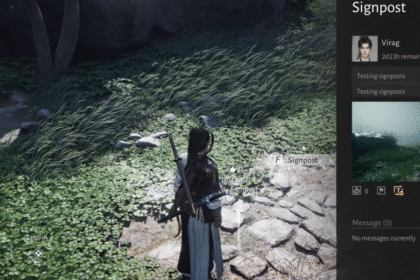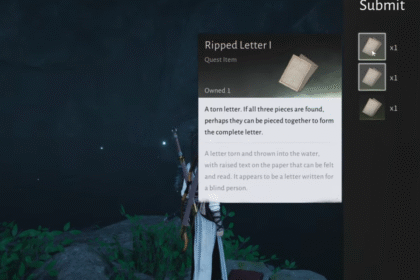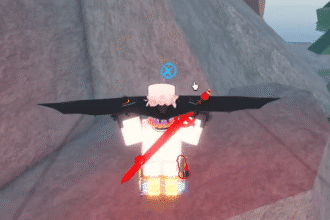If you’ve ever picked up a heavy weapon in Deepwoken, you already know it’s not for the faint of heart. Heavy mains live and die by timing, reads, and patience, but when it all clicks? You’ll be absolutely demolishing people who think your weapon’s just “too slow.”
In this guide, I’ll walk you through the core techniques every Heavy player needs to know. These aren’t flashy gimmicks or unnecessary flex techs, just the real fundamentals that’ll help you get better, no matter what kind of build you’re running.
I won’t bore you with every minor detail (that would take a full hour-long breakdown), but I’ll cover five essential mechanics that define good Heavy play.
Fair warning though, none of these are “easy.” They’ll take time to master, but trust me, the payoff is worth it.
Let’s get started.
1. The “Budget Lightspeed Reflexes”
Think of this as the DIY version of the Lightspeed Reflexes talent.
That talent gives you auto-parry frames after a feint, but not every build can get it. Luckily, there’s a way to mimic it manually.
Here’s how it works:
If you’re mid-swing and notice your opponent attacking at the same time, you already know your Heavy M1 won’t connect first. Normally, that means your swing gets canceled and you eat a full combo.
Instead, cancel your M1 mid-swing with a feint, then immediately parry.
It’s almost like pressing M2 and F at the same time, but with a slight delay between the two.
Do this right, and you’ve basically got your own version of Lightspeed Reflexes. It saves you from unnecessary damage and keeps pressure on your opponent, all without relying on luck or talent RNG.
Once you’re confident with M1 feints, start experimenting with mantra feints too. The principle’s the same: fake the attack, bait the response, and punish.
2. Roll Parry Uppercut (a.k.a. Insta Uppercut)
You’ve probably seen the standard roll-parry mantra combo, it’s everywhere.
But with Heavy weapons, we do things a little differently. Instead of roll-parrying into a mantra, you’ll roll-parry into an uppercut.
Here’s the step-by-step:
- Roll an incoming attack.
- Parry right after to activate the Fast Blade speed boost.
- Use that momentum to quickly move behind your opponent and uppercut.
This combo is sneaky. The parry speed boost makes your movement unpredictable, and the animation delay makes it harder for opponents to read what’s coming next.
You can also make your uppercuts even faster by crouching and parrying at the same time. That way, when your parry ends, you’re already crouched, meaning your uppercut comes out instantly, with almost no wind-up.
3. The Down Slam Combo (Heavy Exclusive)
Now we’re getting into true Heavy-only territory.
When you flourish someone mid-air, it slams them down, kind of like a classic ABA down slam. That slam leaves them stunned for a surprisingly long time, long enough for certain heavies (like Higher Hubris) to land an extra M1 before they can even stand up.
Most weapons can’t take full advantage of this, since hitting an opponent once usually forces them to get up. But with Heavy? You can chain:
Uppercut → Flourish → M1
That’s three guaranteed hits, uppercut damage, flourish damage, and the post-slam hit. If they’re still shaky blocking afterward, bait it and punish again.
You can also swap that last M1 for a mantra or a critical depending on your setup. The key is recognizing how long that stun window lasts and milking it for every bit of damage.
4. Uppercut Optimization & M1 Cycling
Uppercuts are strong but risky, they’ve got noticeable end lag, and if you miss or get blocked, you’re wide open.
To stay safe, feint before uppercutting. M1 feint → Uppercut is a reliable setup that often lands on block and chips away at posture.
But here’s where the real benefit comes in: uppercuts help cycle your M1 strings.
Both feints and uppercuts count as M1s, meaning if you feint then uppercut, you’re already two attacks deep into your M1 chain. That means your next attack will trigger a flourish.
Flourishes are basically “buffed M1s”, faster, harder-hitting, and great for combo setups.
And if you’ve been paying attention, you know flourishes lead directly into our down slam combo from earlier. So learning to cycle M1s faster means more flourishes, more combos, and more control over the fight.
5. Putting It All Together
Now let’s combine everything.
You’ve got:
- Tech 1 to make your swings unpunishable with feints and parries.
- Tech 2 for defensive punishes and instant uppercuts.
- Tech 3 for guaranteed combo chains.
- Tech 4 to cycle M1s and keep pressure constant.
Put all that together, and suddenly your “slow” Heavy weapon becomes a precision machine. You’re not just swinging blindly anymore, you’re reacting, baiting, and punishing with intention.
By cycling to your flourishes faster, keeping your air swings safe, and using down slams efficiently, you can completely change how people approach fighting you.
It’s smooth, hard to react to, and perfect for turning defense into offense.
Wrapping Up
Everything here comes from my personal Heavy playstyle, this is literally how I play the game. You can take it as-is or tweak it to fit your build. If you’re a mantra-heavy player, swap some M1 feints for mantra feints. If you’re pure melee, focus more on your flourish timing.
The main takeaway is this: Heavy isn’t just about hitting hard, it’s about hitting smart.
Once you master these mechanics, you’ll notice how much safer, faster, and more consistent your gameplay feels.
And if any of this felt confusing, that’s okay. These aren’t easy concepts to learn overnight. Until then, keep practicing, keep swinging, and make those heavies proud. Up next, if you’re wondering which Attunements are best in Deepwoken, check out our tier list!













